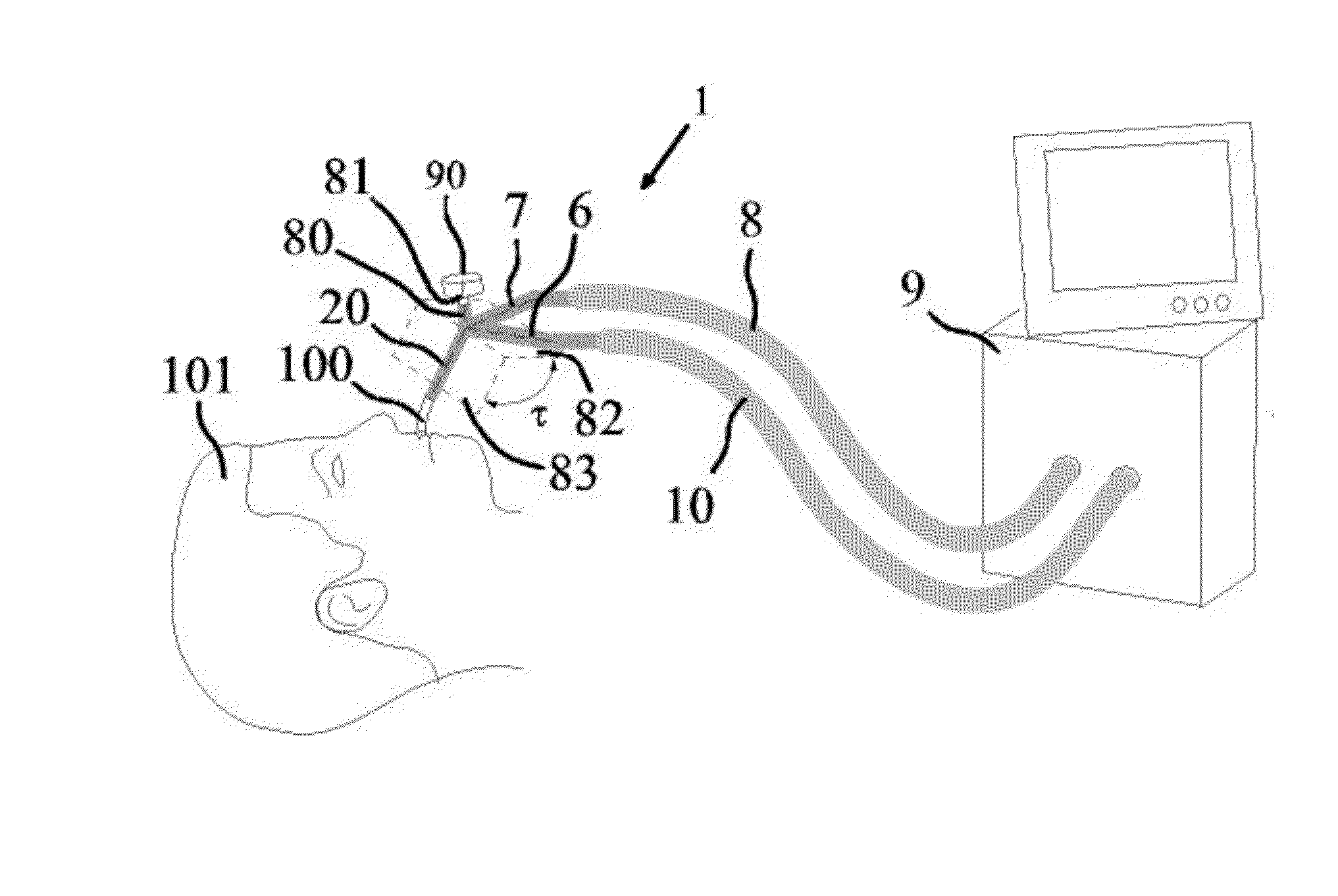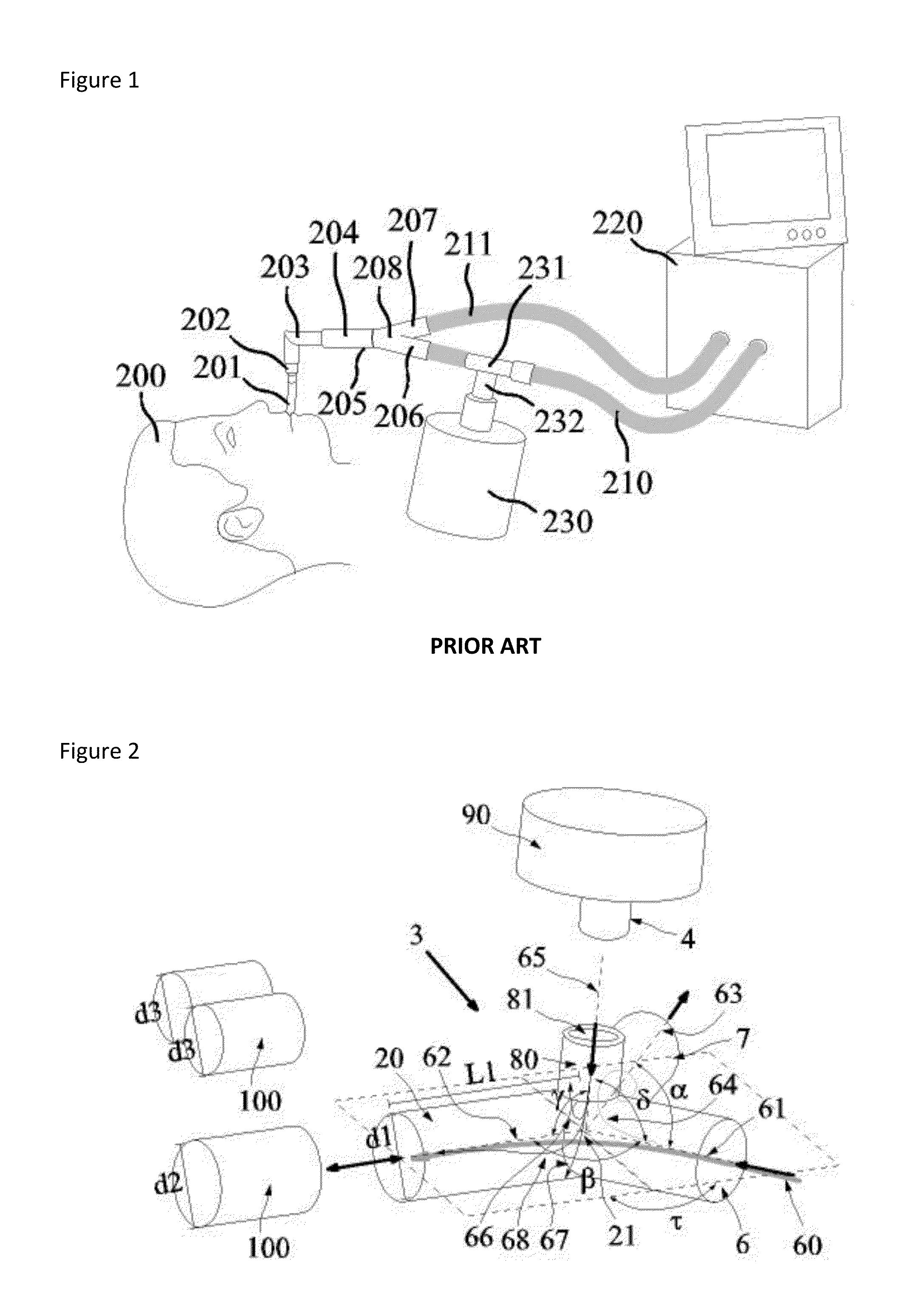Gas delivery unit and breathing mask for delivering respiratory gas of a subject
- Summary
- Abstract
- Description
- Claims
- Application Information
AI Technical Summary
Benefits of technology
Problems solved by technology
Method used
Image
Examples
Embodiment Construction
[0029]Specific embodiments are explained in the following detailed description making a reference to accompanying drawings. These detailed embodiments can naturally be modified and should not limit the scope of the invention as set forth in the claims.
[0030]FIG. 2 shows a simplified schematic view of a gas delivery unit 3, such as a. breathing circuit branching unit 3 used to guide inspiratory and expiratory air during ventilation of a patient and to allow the delivery of fluids into the patient's lungs during inspiration. The gas delivery unit 3 comprises a branching point 21, such as connection point, that connects an inspiratory limb 6 for inspiratory gas, an expiratory limb 7 for expiratory gas, a common limb 20 for both the inspiratory and the expiratory gases and at least one port 81 such as pressure saving port, with or without an additional limb 80, for connecting a fluid dispenser 90, such as a liquid dispenser, to deliver fluids into the patient's lungs during inspiration....
PUM
 Login to View More
Login to View More Abstract
Description
Claims
Application Information
 Login to View More
Login to View More - R&D
- Intellectual Property
- Life Sciences
- Materials
- Tech Scout
- Unparalleled Data Quality
- Higher Quality Content
- 60% Fewer Hallucinations
Browse by: Latest US Patents, China's latest patents, Technical Efficacy Thesaurus, Application Domain, Technology Topic, Popular Technical Reports.
© 2025 PatSnap. All rights reserved.Legal|Privacy policy|Modern Slavery Act Transparency Statement|Sitemap|About US| Contact US: help@patsnap.com



